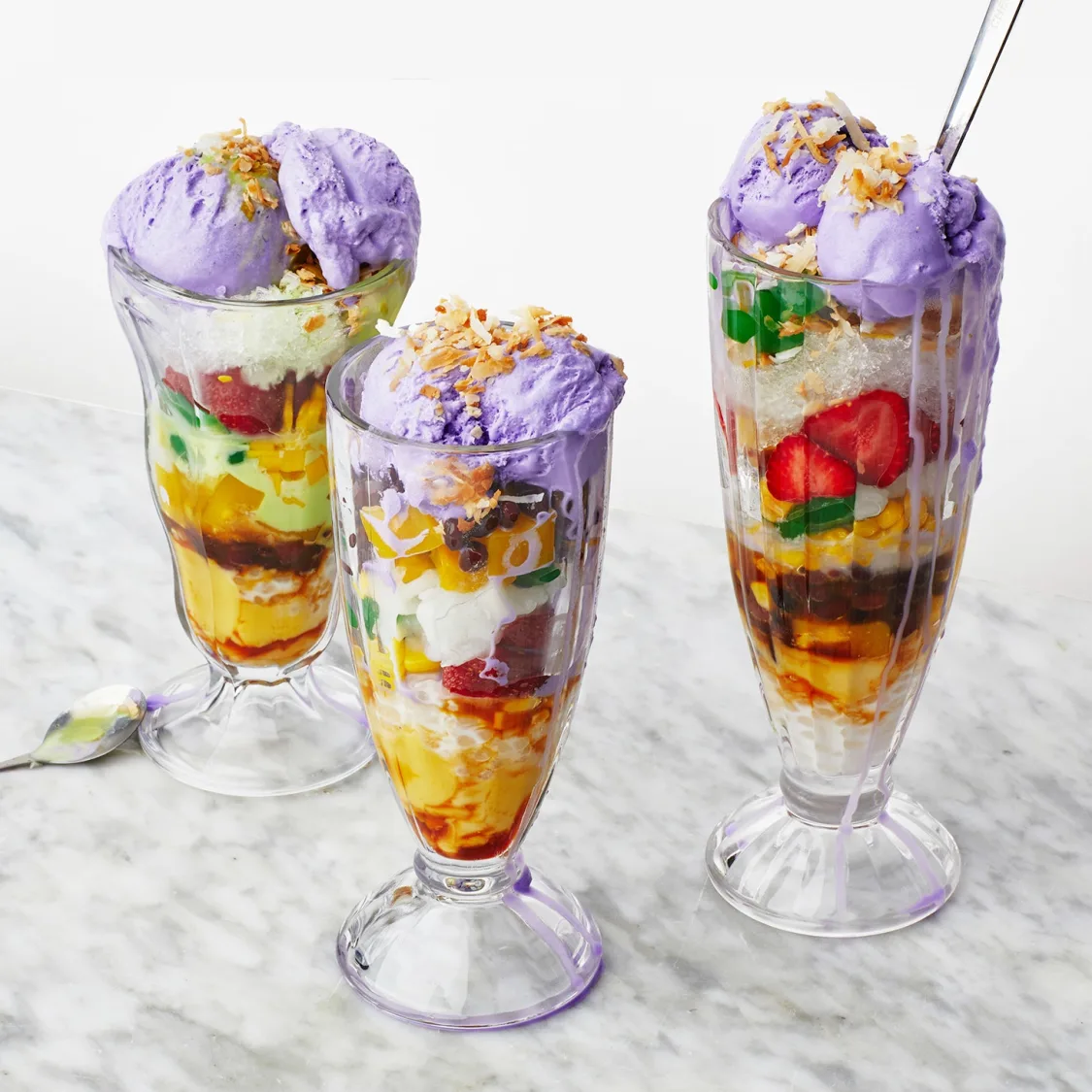
Halo-halo
A popular dessert with mixed sweetened ingredients, shaved ice, and ice cream.
Ingredients
- •Shaved ice
- •Ube ice cream
- •Sweet beans
- •Nata de coco
- •Leche flan
- •Evaporated milk
Instructions
Layer
Layer sweetened ingredients in a tall glass.
Complete
Top with shaved ice, ice cream, and drizzle with milk.
Halo-halo, which literally means "mix-mix" in Tagalog, is the Philippines' most iconic dessert. This colorful and refreshing treat is a delightful medley of sweetened ingredients, shaved ice, and ice cream, all layered beautifully in a tall glass. The combination of different textures and temperatures makes every spoonful an exciting adventure for your taste buds.
The origins of halo-halo can be traced back to the Japanese settlers in the Philippines who introduced kakigōri (shaved ice) and mongō (sweetened beans). Over time, Filipinos transformed this simple dessert by adding local ingredients and creating the elaborate version we know today. During the American colonial period, the addition of ice cream further enhanced its appeal.
Creating the perfect halo-halo is an art of layering. It typically starts with a foundation of sweetened beans, nata de coco (coconut gel), kaong (sugar palm fruit), and various preserved fruits at the bottom of a tall glass. These ingredients are then topped with a generous amount of finely shaved ice, drizzled with evaporated milk, and crowned with a scoop of ube (purple yam) ice cream. Many versions include a slice of leche flan (caramel custard) and a sprinkle of toasted rice crisps for added crunch.
Modern interpretations of halo-halo are endless. Some upscale restaurants serve deconstructed versions, while others incorporate non-traditional ingredients like breakfast cereals or chocolate syrup. The type of ice cream can vary from the traditional ube to mango, vanilla, or even cheese flavor. Some vendors are now offering "skinny" versions with sugar-free sweeteners and low-fat milk alternatives.
In Filipino culture, halo-halo is more than just a dessert - it's a beloved summer tradition. You'll find it everywhere from humble street carts to high-end restaurants, especially during the hot summer months. It's often enjoyed as an afternoon snack or after-meal dessert, and it's common to see families and friends gathering at halo-halo stands to beat the tropical heat.
While delicious, halo-halo can be quite high in calories and sugar, with a typical serving containing around 350-400 calories. The sweetened ingredients and ice cream make it a treat best enjoyed in moderation, especially for those watching their sugar intake. Diabetics should be particularly careful, though sugar-free versions are becoming more available. Those with dairy sensitivities can request less evaporated milk or substitute it with non-dairy alternatives. The good news is that ingredients like beans and ube do provide some nutritional benefits, including fiber and vitamins.
